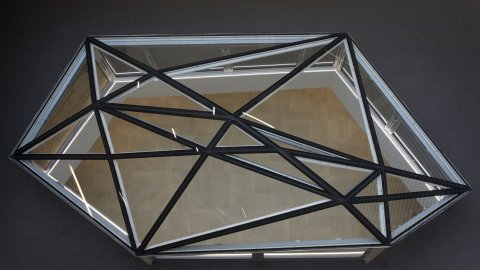In biological cells, genomic DNA is complexed with proteins, forming so-called chromatin structure, and packed into the nucleus. Not only the nucleotide (A, T, G, C) sequence of DNA but also the 3D structure affects the genomic function. For example, certain regions of DNA are tightly packed with proteins (heterochromatin), which inhibits expression of genes coded there. The structure sometimes changes drastically depending on the state (e.g. cell cycle or developmental stage) of the cell. Hence, the structural dynamics of chromatin is now attracting attention in cell biology and medicine. However, it is difficult to experimentally observe the motion of the entire structure in detail. To combine and interpret data from different modes of observation (such as live imaging and electron micrograph) and predict the behavior, structural models of chromatin are needed. Although we can use molecular dynamics simulation at a microscopic level (~ kilo base-pairs) and for a short time (~ microseconds), we cannot reproduce long-term behavior of the entire nucleus. Mesoscopic models are wanted for that purpose, however hard to develop (there are fundamental difficulties).
In this seminar, I will introduce our recent theoretical/computational studies of chromatin structure, either microscopic (molecular dynamics of DNA or single nucleosomes) or abstract (polymer models and reaction-diffusion processes), toward development of such a mesoscopic model including local "states" of DNA and binding proteins.
References:
T. Kameda, A. Awazu, Y. Togashi, "Histone Tail Dynamics in Partially Disassembled Nucleosomes During Chromatin Remodeling", Front. Mol. Biosci., in press (2019).
Y. Togashi, "Modeling of Nanomachine/Micromachine Crowds: Interplay between the Internal State and Surroundings", J. Phys. Chem. B 123, 1481-1490 (2019).
E. Rolls, Y. Togashi, R. Erban, "Varying the Resolution of the Rouse Model on Temporal and Spatial Scales: Application to Multiscale Modelling of DNA Dynamics", Multiscale Model. Simul. 15, 1672-1693 (2017).
S. Shinkai, T. Nozaki, K. Maeshima, Y. Togashi, "Dynamic Nucleosome Movement Provides Structural Information of Topological Chromatin Domains in Living Human Cells", PLoS Comput. Biol. 12, e1005136 (2016).
-


